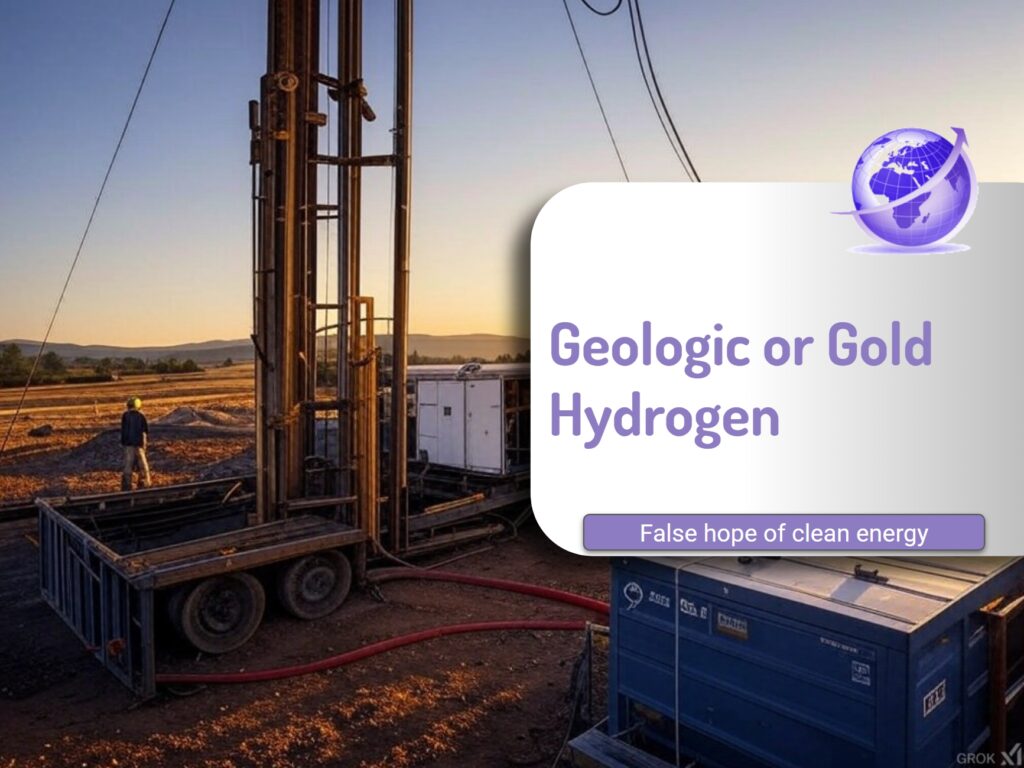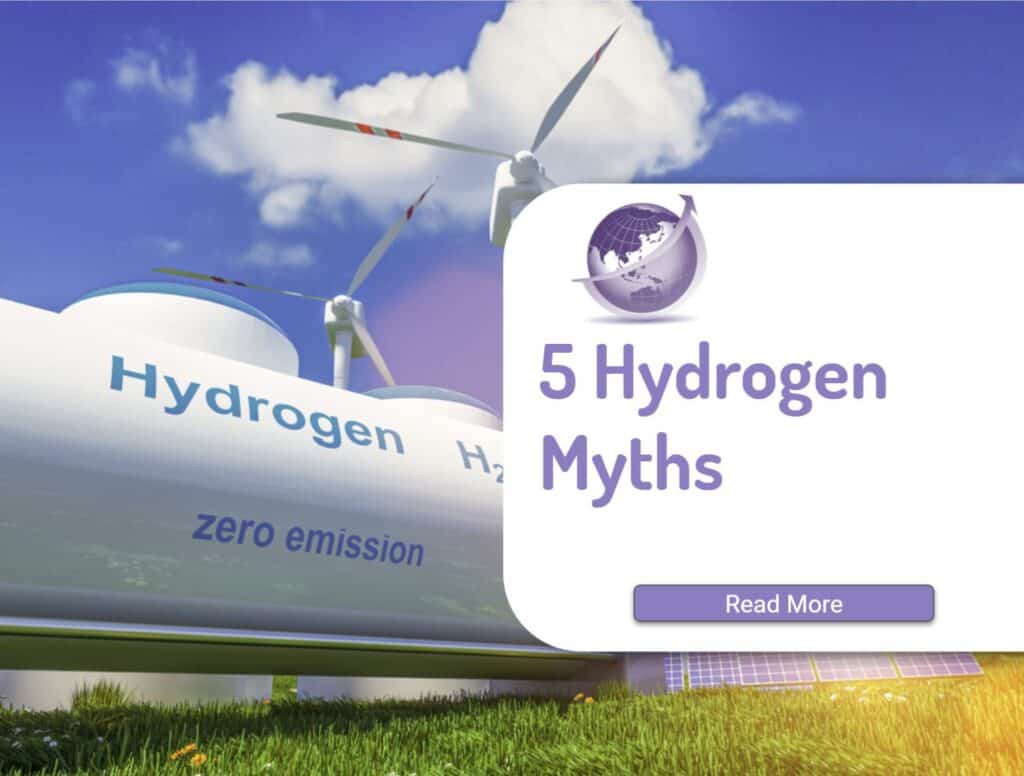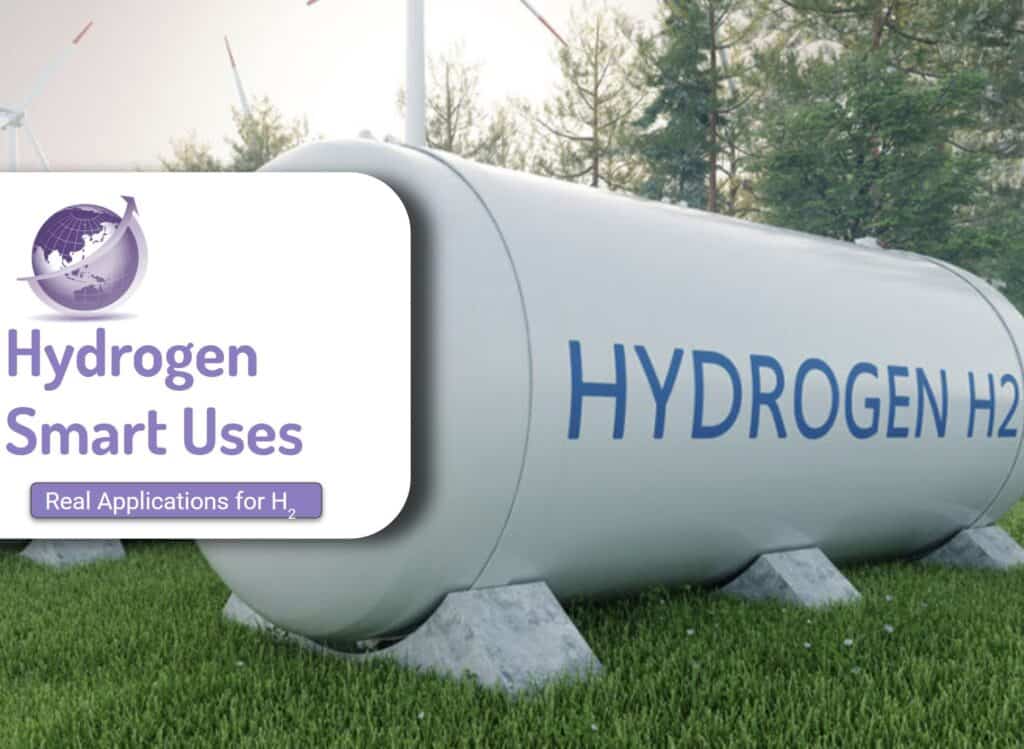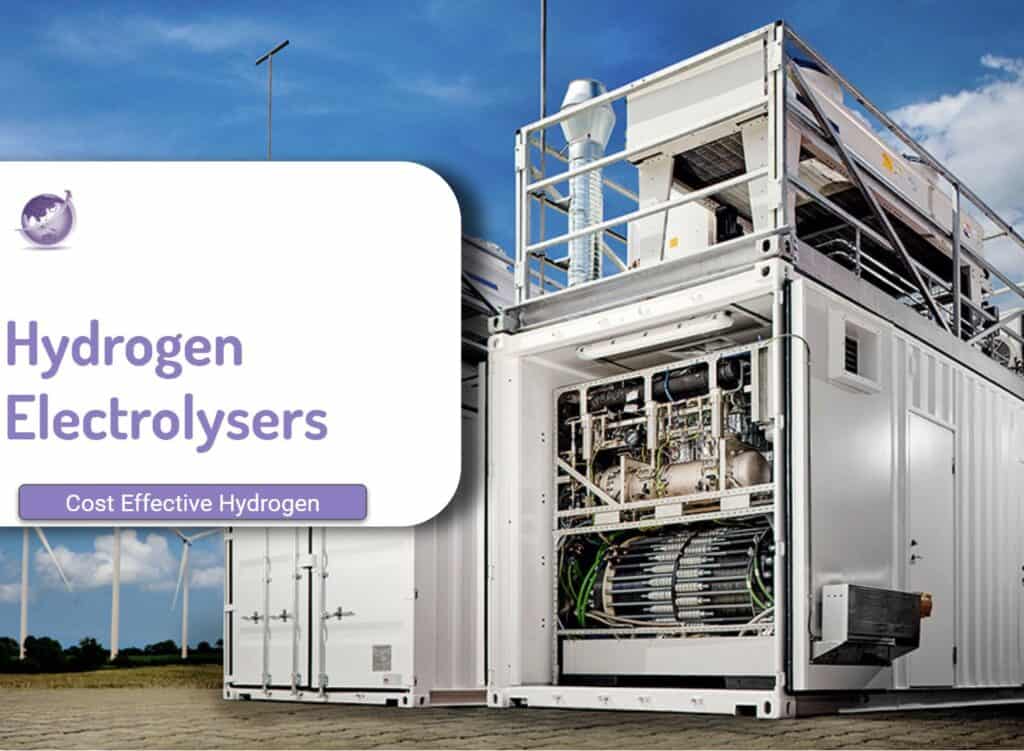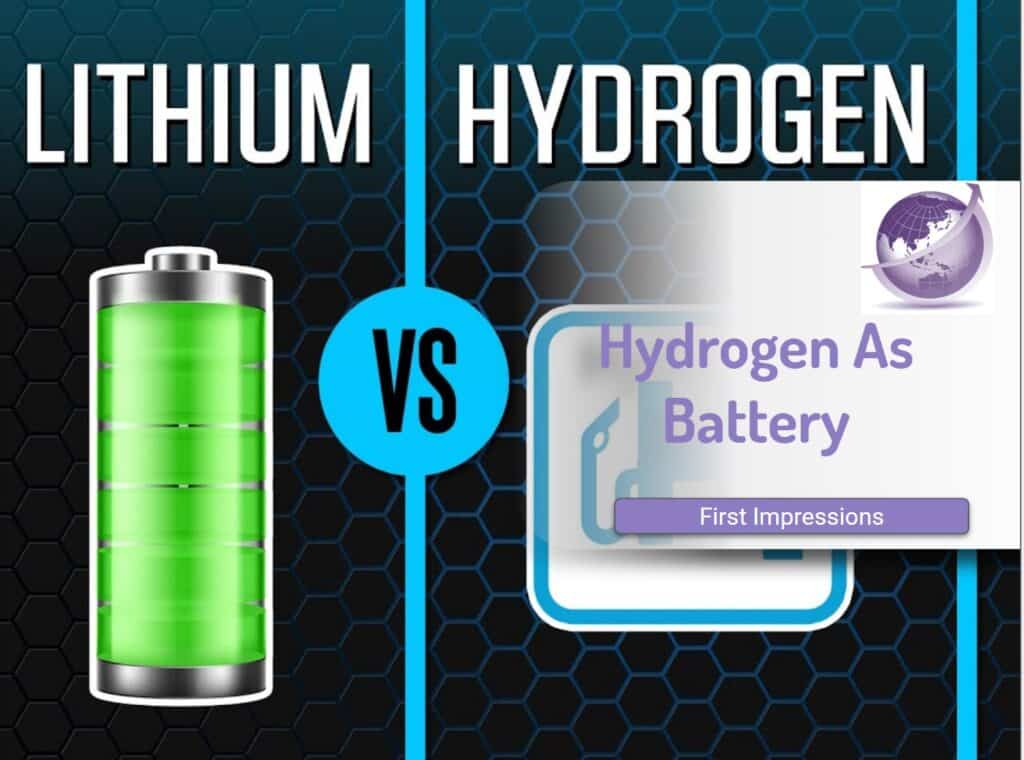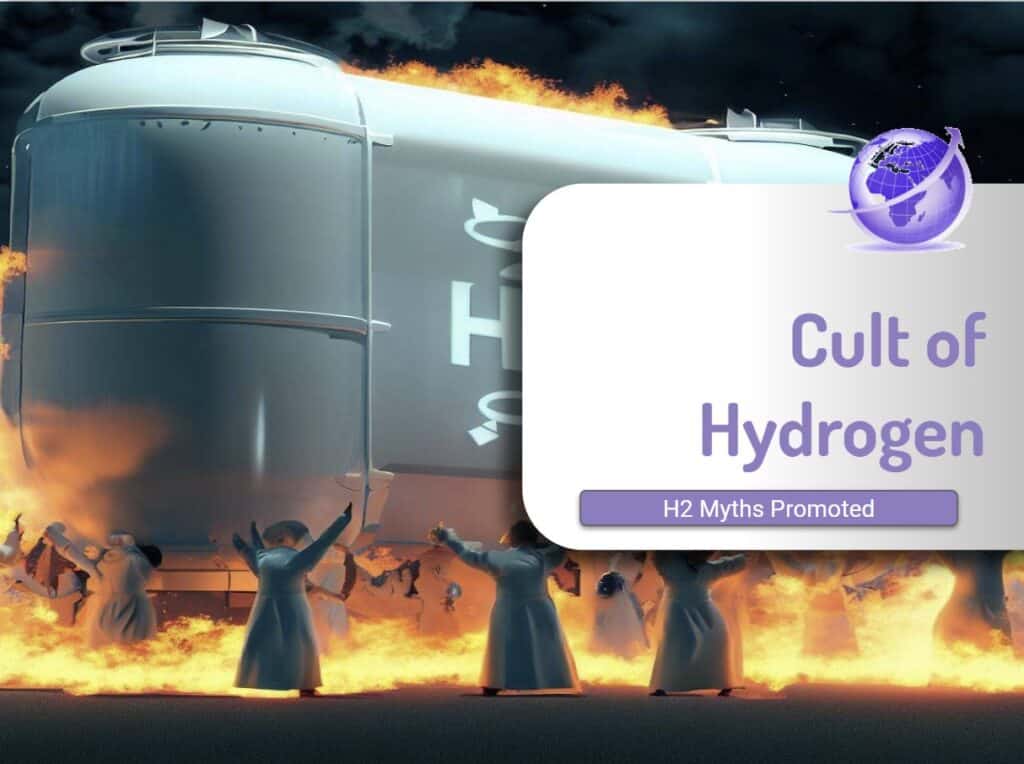Geologic hydrogen or gold hydrogen naturally occurrs underground. Geologic or clear, orange or white hydrogen could potentially be a clean and cheap source of energy. Renewable energy creates green hydrogen. Green H2 could replace fossil fuels but as discussed elsewhere is an expensive boondoggle. Despite much promotion and greenwashing, green hydrogen is too expensive, too difficult to store and too difficult to transport.
Existing “grey” global hydrogen production exceeds 110 million tonnes pa. Methane gas is converted to grey H2. The carbon emissions exceed 1.3GTpa of CO2. The cost to produce is about $0.8/kg. Some hydrogen spruikers say the H2 market will grow to 220MTpa by 2050. Most of this is expected to be blue H2, at $1.2-1.5/kg. Blue hydrogen comes from methane but uses carbon capture and storage processes to reduce CO2 emissions. CCS is also a boondoggle. Currently, green H2 costs over $10/kg.
Geological or Gold Hydrogen Media
In a Bloomberg podcast Dana Perkins interviewed with Sammy Alisowi from BNF’s Hydrogen team, and Mushfka Mishi from the Technology and Innovation team. There is considerable interest with many conferences and events.
Key points
How is Hydrogen Produced?
No one knows actually knows how geologic hydrogen is produced.
- Serpentinization. Probably the most significant process. It occurs when water reacts with iron-rich rocks like olivine under high temperatures and pressures. During this reaction, the iron in the rock oxidises, releasing hydrogen as a byproduct.
- Radiolysis. Radioactive decay of elements like uranium and thorium can also produce hydrogen by splitting water molecules.
- Mantle Degassing. This theory suggests hydrogen trapped within the Earth’s mantle can be released through tectonic activity.
Extracting Geologic Hydrogen
Extraction is still in the early stages of development, at only one site in Mali, and technical and economic challenges.
- There are three main ways to extract geologic hydrogen: from traps, directly from underground rock formations, and through stimulated hydrogen production (similar to fracking).
- The current hotspot areas for geologic hydrogen are North America, Australia, and parts of Eastern Europe and Northern Asia. Prospectors have been rushing to find it — drilling for hydrogen in northeast France, Australia, Spain, Morocco, Brazil, and, in the United States, in Nebraska, Arizona, and Kansas.
- Co-producing helium with geologic hydrogen, could improve economics. Helium is in short supply, a global market for 170,000 m3 of bulk liquid helium worth over US$2.8 billion with Qatar and USA major producers. Currently it is co-produced from gas extraction.
- There is debate about the potential of geologic hydrogen. Optimists believe it could be the cheapest and cleanest form of hydrogen, while skeptics point to the lack of large-scale production and the challenges of transportation.
Life Cycle Analysis
Research has indicated
- Gold hydrogen – a gas mix of 85% hydrogen and 12% Nitrogen with 2% methane will have a carbon intensity = 0.4kg CO2 per kg of hydrogen gas.
- Green hydrogen is 2 to 5kg
Cost of Gold Hydrogen
- Estimated costs of of $1/kg
- Green hydrogen = $12
- Cost of grey = $1kg
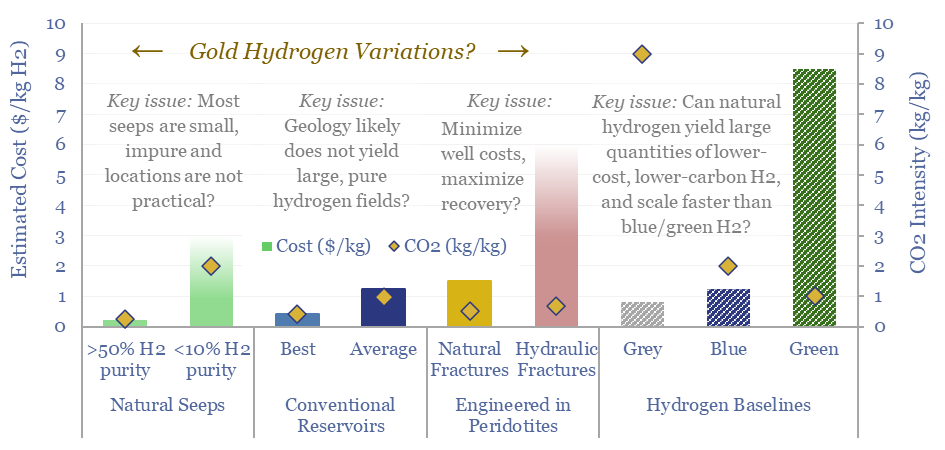
Notable insights:
- Geologic hydrogen has the potential to be a game-changer in the clean energy transition, but significant technological and economic hurdles need to be overcome before it can be widely adopted.
- The co-production of helium with geologic hydrogen could be a key factor in making this technology commercially viable.
- Further research and development are needed to determine the true potential of geologic hydrogen.
Hydrogen is a Global Greenhouse Gas
Fugitive emissions are a concern from extraction, storage and transport. Hydrogen leaks from wellheads, pipelines, and other infrastructure are inevitable. Emissions will happen regardless how hydrogen is produced. Naturally or manufactured – it leaks. Hydrogen is not itself a greenhouse gas, but it has indirect warming properties. Some of the hydrogen released will react with the atmospheric compound hydroxyl, creating ozone, which in the lower atmosphere is a greenhouse gas. Hydroxyl is the atmosphere’s main cleansing agent. Because As the hydrogen leaves less of the organic compound available to break down methane and other greenhouse gases, resulting in those gases lasting longer in the atmosphere and causing additional warming. That is up to 30 times the GHG of CO2.
Speakers Conclusion
The speakers were asked to give a positive or a negative review.
- Mushfika Mishi said he was skeptical about geologic hydrogen. No large-scale production yet. No defined resources, large capital needed to extract, and faces the problem of hydrogen transportation and storage. Unlikely for a decade.
- Sammy Alisowi was more optimistic because of potential low cost, low emissions, and potential abundance.
References
- Drilling for Gold: The Hydrogen Beneath Our Feet https://www.bloomberg.com/news/audio/2025-01-08/drilling-for-gold-the-hydrogen-beneath-our-feet-podcast
- Natural Hydrogen: A Potential Clean Energy Source Beneath Our Feet Jan 2024 https://e360.yale.edu/features/natural-geologic-hydrogen-climate-change
- Holm NG, Oze C, Mousis O, Waite JH, Guilbert-Lepoutre A. Serpentinization and the Formation of H2 and CH4 on Celestial Bodies (Planets, Moons, Comets). Astrobiology. 2015 Jul;15(7):587-600. doi: 10.1089/ast.2014.1188. Epub 2015 Jul 8. PMID: 26154779; PMCID: PMC4523005. https://pmc.ncbi.nlm.nih.gov/articles/PMC4523005/
- Natural hydrogen: sources, systems and exploration plays Jackson et al May 2024 https://www.lyellcollection.org/doi/full/10.1144/geoenergy2024-002 https://doi.org/10.1144/geoenergy2024-002
- Natural hydrogen: going for gold? Aug 2024 https://thundersaidenergy.com/2024/08/15/natural-hydrogen-going-for-gold/

